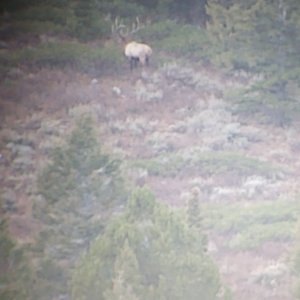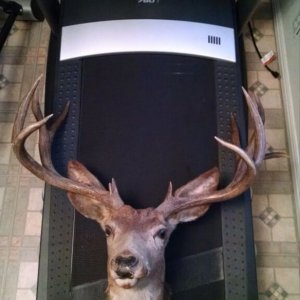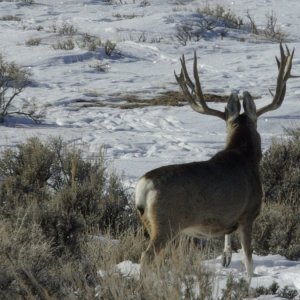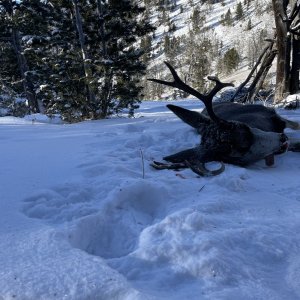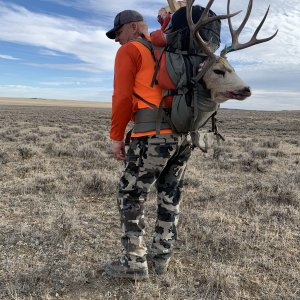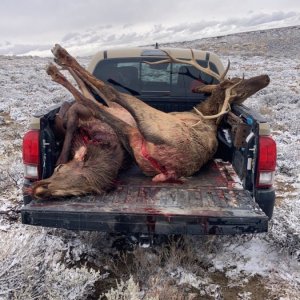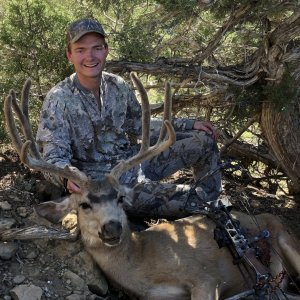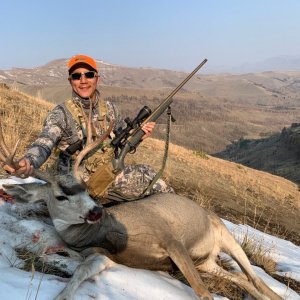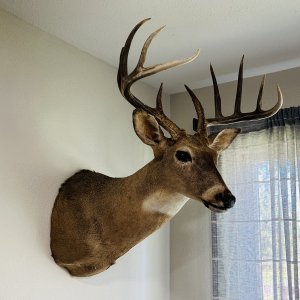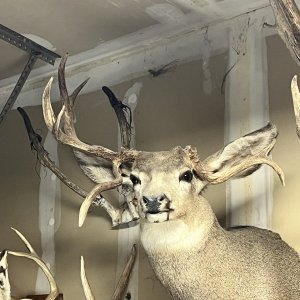This is long but bear with my the original story in on the
North American Bowhunting Coalition website.
I think the web address is
www.nabowhunting.org
If ya take the time to read the test results you will see
that a person that had never fired a crossbow, within 20 shots was shooting sub 4 inch 5 shot groups AT 100 FREAKING YARDS
Crossbow Tests March 2005
Great Lakes Crossbow Co.
DURANGO
The reason for conducting these tests was to establish a basis for performance measurements between modern crossbows and other hunting weapons, most specifically, modern compound bows. Given the movement to redefine crossbows as conventional archery tackle so as to allow their use during bowhunting-only seasons, it seemed appropriate to provide a means for comparison. Of particular interest was the accuracy potential of a rested crossbow at extended ranges. Crossbow manufacturers list velocity and pull weights, but I am not aware of any published accuracy expectations.
In early March 2005 I obtained a Great Lakes Crossbow Co. Durango model crossbow in slightly used condition. While it does not have as high peak weight (165 pounds) as many of the ?high performance? crossbows that peak at 175 pounds to 200 pounds, it does have a 17-inch power stroke, and overall, it's velocity and kinetic energy ratings compare favorably with other modern crossbows.
This crossbow has an overall weight of 8 ? lbs., 34-inch length without the stirrup, and very heavy two-piece limbs with an axle-to-axle length of 27 ? inches. It uses round cams, approximately 2 9/16 inches in diameter. It comes fitted with a 4 power, parallax adjustable scope with hand adjustable windage and elevation turrets. The trigger has a pull weight of over 7 pounds, with considerable creep and overtravel. While the crossbow does have a crossbolt safety, it can't be engaged until after the crossbow is cocked and it is in an awkward location to operate safely. Five bolts were also provided. They were fitted with 100 grain screw-in target points and 5? vanes at a slight straight offset. The shafts are 2219 Easton aluminum, cut to 22 1/8 inches before inserts and had an average weight, with points, of 476 grains.
Although as the shooter, I have no previous experience shooting crossbows, I do have considerable experience in competitive rifle shooting.
The first test took place indoors on March 10th. A total of 4 bolts were shot before the cocking mechanism broke under pressure, causing minor damage and some trepidation on the part of the operator. The crossbow was rested across a stool with all 4 shots taken at 22 yards. The initial shot was used to adjust the sights and find a hard spot on the bales where the bolts wouldn't pass completely through them, and then three shots were taken at the same point of aim. The first was taken then pulled. The second entered within ? inch of the first bolt hole and then a third was shot, which hit right next to the second and almost exactly in the hole that the first was pulled from. As mentioned, the cocking winch broke at that point, but a three shot group of under ? inches was a pretty impressive start.
After the winch was repaired I was back at the range on March 12th to shoot at longer distances. The crossbow was shot from a shooting bench
with sandbags. I had shimmed the back of the scope .050 because I anticipated that the scope would run out of elevation adjustment before it could be held dead-on at the longer ranges I hoped to shoot it at. It turned out not to be necessary because even at 90 yards, the bolt sailed over the whole bale assembly. It was recovered but was bent badly due to impact with a tree. The shims came out. After four shots at 40 and 60 yards to get ?on? the bales I moved to 90 yards and impacted below my aiming point. I then adjusted the scope to the bulls-eye and shot a four shot group with the four straight bolts I had remaining. The aiming point was a scrap of white paper. The first shot hit about 1 inch left of the paper, the second hit it, the third hit about 4 inches right and the final one, less than an inch right. The final 90-yard group was a horizontal string less than 5 inches across. Penetration was approximately 8 inches into frozen and practically new excelsior bales.
Even though these results surprised me, I felt this crossbow was actually capable of better accuracy. Conditions were not good with variable winds to at least 10 mph. Also, I wanted to straighten the bent bolt so I could shoot a 5 shot group.
In checking the bolts when I got home, I found that all but one were bent at least .005. I don't know if they came that way or it was the result of impact and/or removal from the frozen bales, but I straightened them the best I could. Unfortunately, the bolt that hit the tree couldn't be straightened sufficiently.
I returned to the range on March 25th. Conditions were better with light winds, temperature in the low 40?s and clear skies. With the aid of a laser rangefinder, I set my bench up (across the parking lot) exactly 100 yards from the farthest bale. I used a rifle bipod instead of sandbags to rest the stock and had adjusted the scope in the rings to avoid canting.
I took two shots to get me close to the bulls-eye, then put up a new target and shot the four almost-straight bolts. The four shot group measured just slightly less than 4 inches across. Because I prefer to shoot 5 shot groups for rifle testing, I pulled the bolts, returned to the bench and shot a fifth bolt. It hit within the holes from the previous four shots, so the 5 shot group at 100 yards measured less than 4 inches across, with 4 of the 5 shots hitting within a 3-inch circle.
With straight carbon bolts and perhaps some fine tuning of equipment, I don't doubt that this could be improved upon, however, this level of long range accuracy exceeded my wildest expectations - and concerns.
I have never fired a crossbow before in my life. And now within 20 shots can group 5 bolts into 4 inches at 100 yards with a borrowed crossbow. I can say that I have owned some deer rifles in my life that haven't grouped that well at 100 yards. However, because of a much greater trajectory curve for the bolt and longer time of flight, the rifle would still be superior unless wind was light and the exact distance was known. Which brings up an interesting point. Ten years ago this very same crossbow wouldn't have been nearly as effective as a long range weapon because range estimation at that time was far less precise. However, with the development of technology completely unrelated to crossbows ? laser rangefinders - this crossbow in conjunction with one becomes a bona fide 100-yard killing machine. It would only be a matter of laser ranging the target, dialing the elevation to that exact
distance setting on a scope like the one that came with this crossbow, and then putting the crosshairs on the heart and pulling the trigger. The whole process takes just a few seconds. Pre-ranging distances and using a mil-dot scope would eliminate even that short time.
This is only one crossbow. I don't doubt statements by others that have shot crossbows, particularly older models, that say they are not accurate at longer distances. However, this one is. And if this and other newer models have this potential, then everyone that can hunt with one has essentially the same potential; because accuracy is almost completely a function of mechanical action with no significant skill required.
One consideration that I can't comment on is potential variations in accuracy using broadheads. I suspect, but can't confirm until our sand bunkers thaw out, that given the substantially heavier projectile fired from a crossbow, especially with mechanical broadheads, projectile flight can be controlled.
I will leave it to those that read this to form their own opinions on the effect this type of weapon would have on a bow-only season, but there is no question that with widespread use, the effect would be significant, not only on the bow-only season itself, but also upon the harvest dynamics of all seasons for the species involved.
Mike Brust,
Wausau, WI


